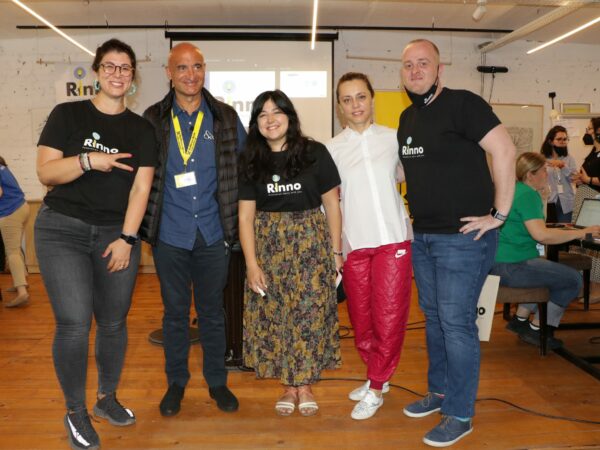
Catalina Arateanu
Strategic Partnerships and Ecosystems Manager
Raiffeisen Bank International AG
Humanity has been using the phrase “artificial intelligence” (AI) for almost seventy years, since the phrase was coined by a group of four academic researchers who proposed it as a new field for which they needed funding. The year was 1955 and the young professor who initiated the project was John McCarthy from Dartmouth College, somewhere on the north-eastern coast of the United States of America. Since then, the field has developed continuously, albeit with ebbs and flows.
The field of artificial intelligence is centered around the concept that we understand the way human intelligence works and we can build machines able to simulate the processes accordingly and produce equivalent results.
Generative AI refers to a particularly interesting and exciting subfield of artificial intelligence that enables computers not only to understand and interpret information, but also to generate new content, like the process humans use for the same purpose. The AI-generated content can come in any form, such as text, images, sound and even music. The newly generated content is very realistic and can easily pass the famous Turing Test, meaning that some machines can now produce materials equivalent to or indistinguishable from humans.
AI boom in 2023
The year 2023 has witnessed an unprecedented boom of the generative AI technology. Significant advancements in processing power, vast amounts of data available, and breakthroughs in algorithmic research have brought the whole AI field to a tipping point. The technologies that were previously reserved for specialists and academics are now available to the public, through very simple and intuitive interfaces. This widespread process of “AI democratisation” means that anyone can leverage the new tools to interpret and generate content, multiplying the effect exponentially.
As we delve into this new era of generative AI, it is crucial for individuals and organizations alike to adapt to the advancements and harness their potential effectively.
Potential use of AI for internal bank processes
Within the banking industry, generative AI holds immense promise. Inside the organizations, most use cases address the optimization of internal processes. From a customer-facing perspective, generative AI enables a better, more personalized understanding and tailoring of individual customer relationships, especially for segments where personalization has historically proven difficult.
Let us explore a few potential use cases:
- Internal knowledge assistants: financial institutions are highly regulated companies that hold huge amounts of very specialized knowledge. With the help of generative AI, we can develop intelligent assistants that support employees by helping to find the appropriate information and interpreting it into natural language. These assistants can thus provide real-time support to employees, answer frequently asked questions, and aid in information retrieval. The benefits include unblocking potential information bottlenecks, saving time, and increasing both employee and customer satisfaction.
- HR processes assistants: generative AI can streamline human resources (HR) processes within banks (and in any other industry). By assisting in repetitive tasks such as candidate screening, resume parsing, and employee onboarding, HR professionals can devote more time to strategic initiatives, employee development, and fostering a supportive company culture.
- Content personalization assistants: with the help of generative AI tools, banks can better understand the customer base and offer personalized experiences, rather than segment-generic communication, making sure that the information offered to customers is really tailored to their individual preferences and needs.
- Software development assistants: IT professionals in the financial system can leverage generative AI tools aimed at software engineering. Tools like GitHub Copilot have a proven track record of improving software delivery speed, assisting developers in learning journeys, detecting potential bugs, and improving code documentations.
Staying Competitive: technology with a human touch
Embracing generative AI is not a choice; it is a necessity for any company looking to thrive in the digital age. Education and upskilling initiatives play a vital role in this transformation. Organizations must provide comprehensive training programs to empower employees with the necessary skills to effectively use AI technologies. Additionally, fostering a culture of continuous learning and encouraging employees to reskill and transition into new roles will be crucial. All AI tools, including generative AI ones, should be used to enhance human activities rather than to replace them. Careful supervision needs to ensure the right balance between technology and human expertise, leading to a harmonious collaboration that benefits both organizations and their workforce.
Stay tuned for more insights: this article is the first of two on the topic of Generative AI. In the next article, we will explore the effect of AI on our creativity.



